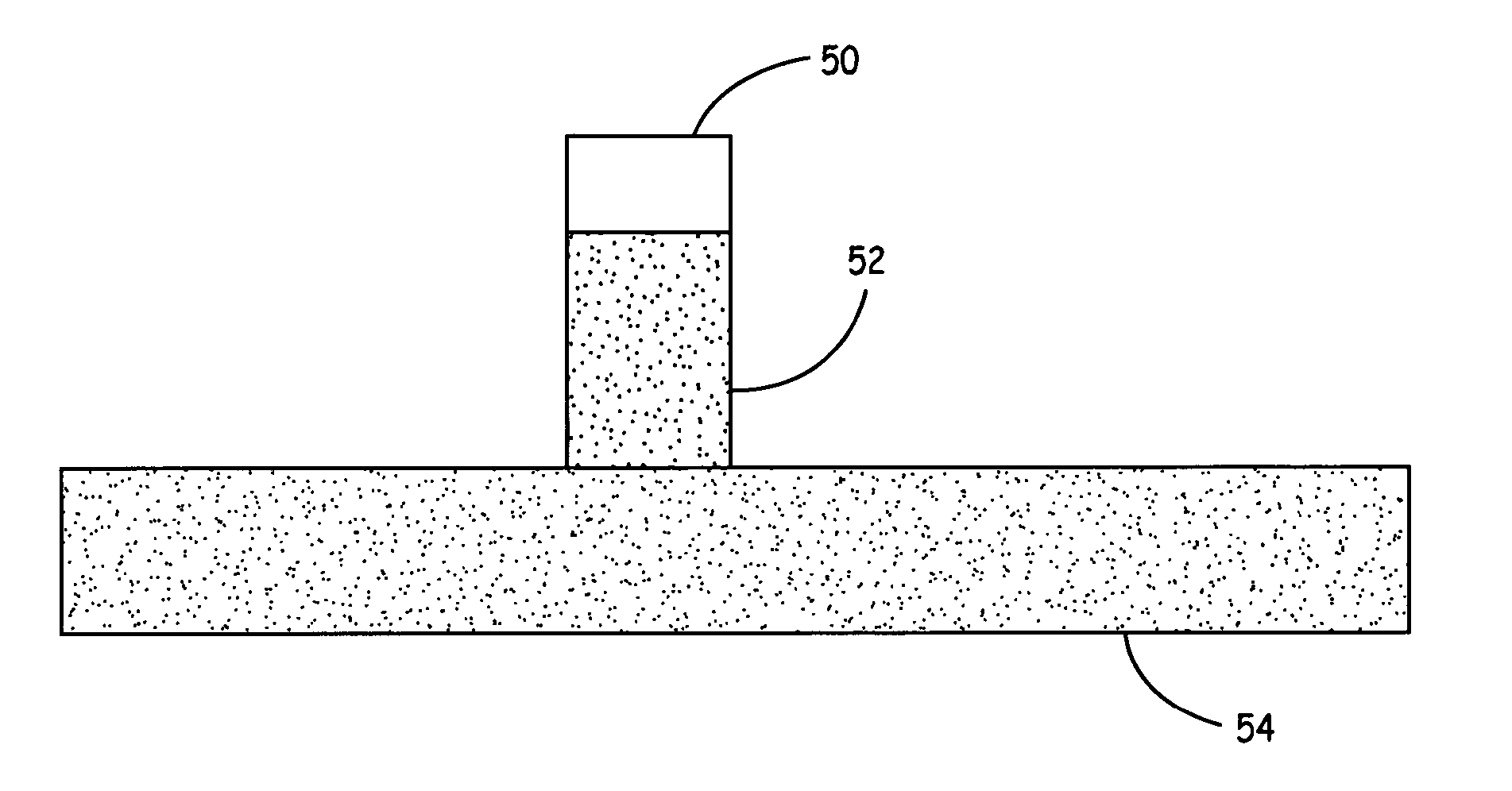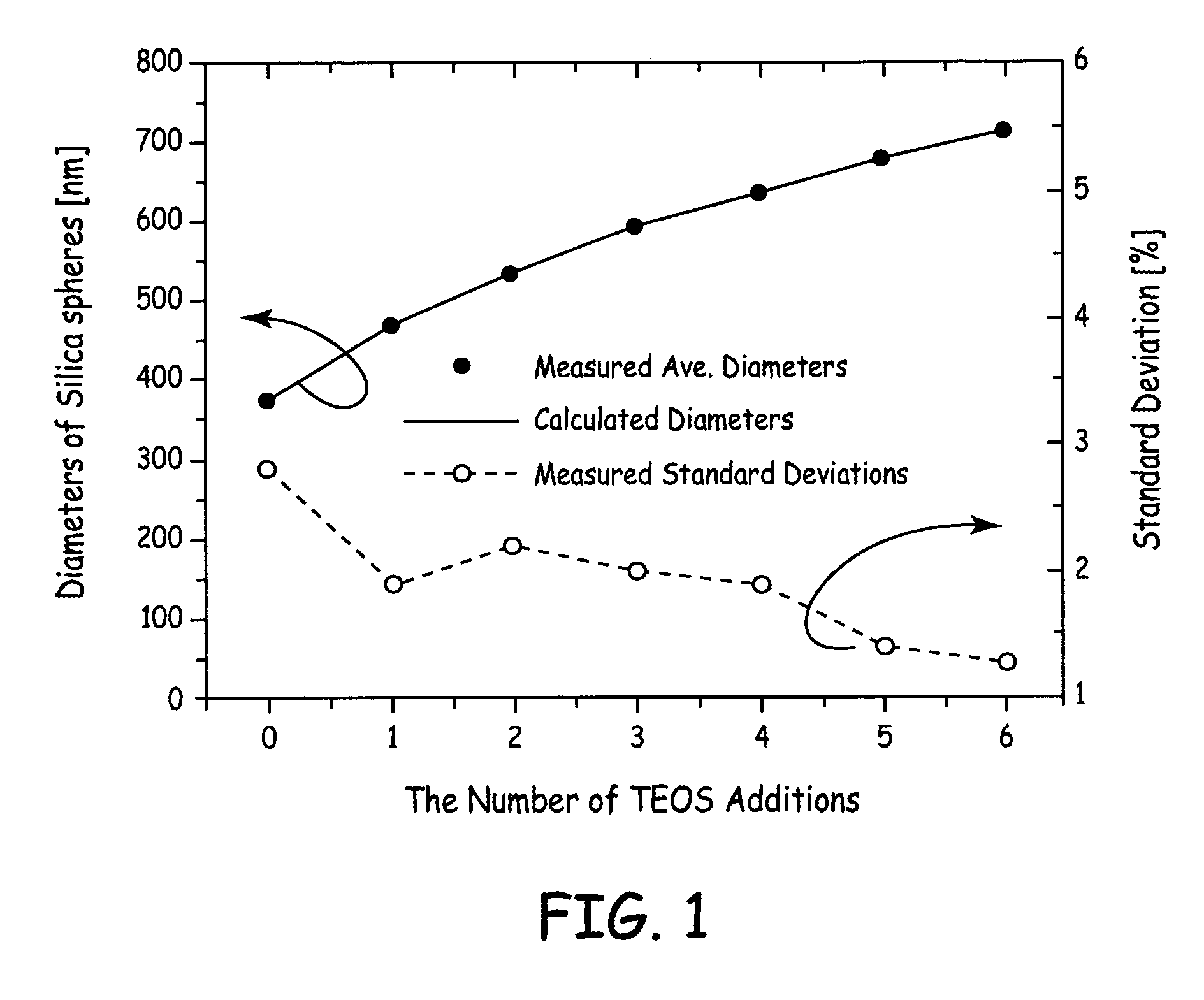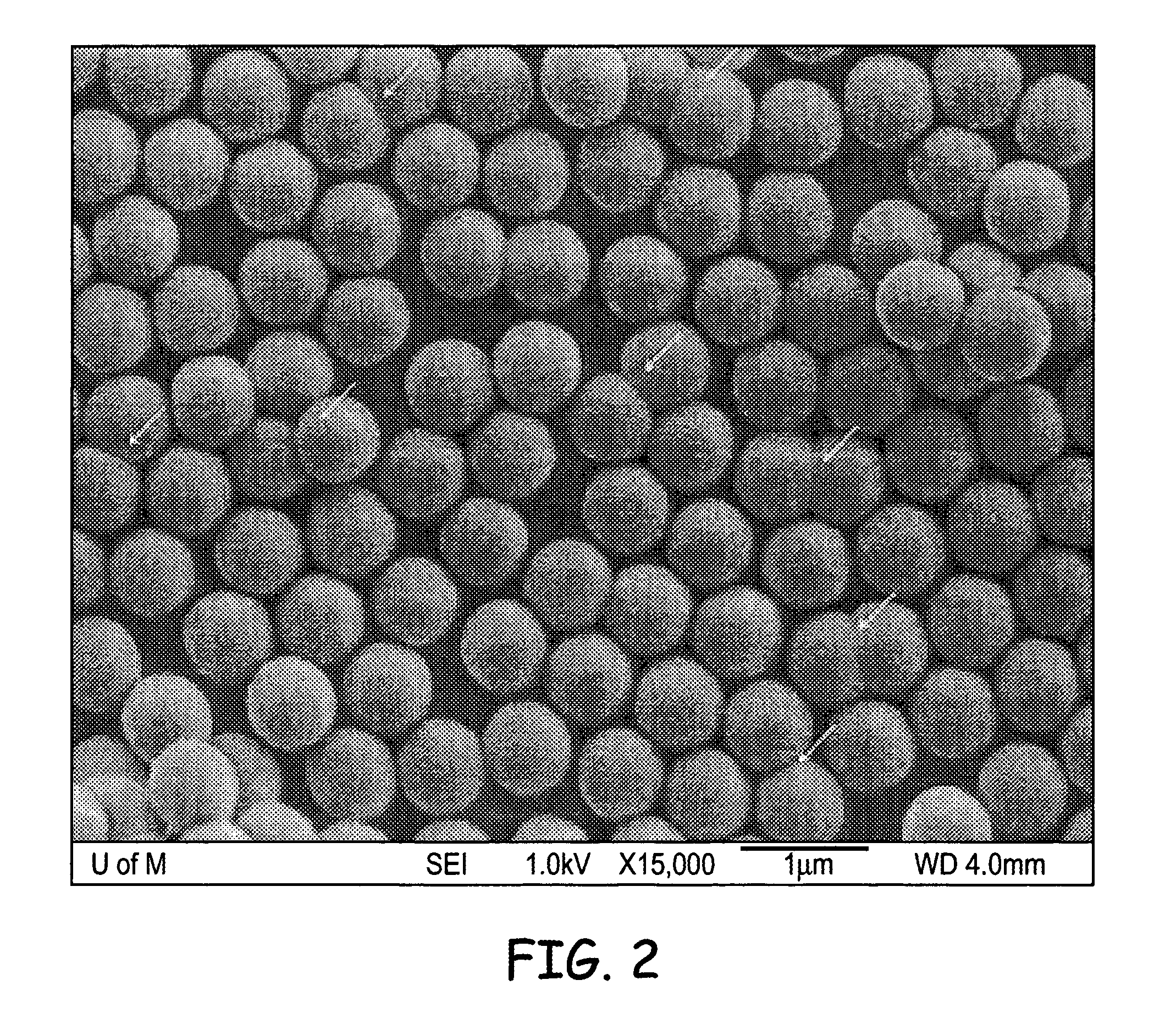Self assembled three-dimensional photonic crystal
a three-dimensional, self-assembling technology, applied in the field of photonic crystals, can solve the problems of structural defects and dislocations in the final crystal, and the fabrication process of photonic crystals requires the use of complicated and expensive semiconductor nanofabrication techniques
- Summary
- Abstract
- Description
- Claims
- Application Information
AI Technical Summary
Benefits of technology
Problems solved by technology
Method used
Image
Examples
Embodiment Construction
[0022]“Photonic Band Gap” (PBG) materials are periodic structures that have pass and stop-bands for the transmission of electromagnetic radiation in specific wavelength bands. Periodic structures have taken the form of air holes in a semiconductor material as originally conceived (see, E. Yablonovich, Inhibited spontaneous emission in solid state physics and electronics, Phys. Rev. Lett., Vol. 58, pp. 2059–2062, 1987). More recently, periodic structures have taken the form of air holes in semiconductors films (see, O. Painter, J. Vuckovic, A. Yariv, A. Scherer, J. D. O'Brien, P. D. Dapkus, Two dimensional photonic band gap defect mode laser, Science, Vol. 284, pp. 1819–1824, 1999) in two dimensions, air holes in dielectric material (see, E. R. Brown, O. B. McMahon, High zenithal directivity from a dipole antenna on a photonic crystal, Appl. Phys. Lett., vol. 68, pp. 1300–1302, 1996), metal rods stacked periodically (see, B. Temelkuran, M. Bayindir, E. Ozbay, R. Biswas, M. M. Sigalas...
PUM
| Property | Measurement | Unit |
|---|---|---|
| angle | aaaaa | aaaaa |
| diameters | aaaaa | aaaaa |
| diameters | aaaaa | aaaaa |
Abstract
Description
Claims
Application Information
 Login to View More
Login to View More - R&D
- Intellectual Property
- Life Sciences
- Materials
- Tech Scout
- Unparalleled Data Quality
- Higher Quality Content
- 60% Fewer Hallucinations
Browse by: Latest US Patents, China's latest patents, Technical Efficacy Thesaurus, Application Domain, Technology Topic, Popular Technical Reports.
© 2025 PatSnap. All rights reserved.Legal|Privacy policy|Modern Slavery Act Transparency Statement|Sitemap|About US| Contact US: help@patsnap.com



